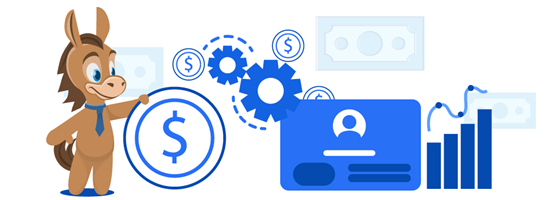How to Avoid Chase Monthly Service Fee
Ad Disclosure: This article contains references to products from our partners. We may receive compensation if you apply or shop through links in our content. This compensation may impact how and where products appear on this site. You help support CreditDonkey by using our links.
Chase Bank's monthly service fees can really add up if you're not keeping track. Here's how you can avoid each fee.
 |
| © CreditDonkey |
Let's cut straight to the chase—pun intended. You're considering opening a Chase account, but that pesky monthly fee has got you on the fence.
Luckily, Chase gives you multiple ways to get that fee out of the picture. It's actually quite easy to waive the fee for their basic accounts, so you can enjoy all the perks without the monthly pinch.
- What Is a Monthly Service Fee?
- Chase Checking Account Fees
- Chase Savings Account Fees
- How to Avoid Chase Monthly Service Fees
- Which Banks Don't Charge Monthly Fees
- Is Chase a Good Bank?
What Is a Monthly Service Fee?
Chase, and most banks, charge a monthly service fee to cover the cost of account maintenance and amenities provided to account holders. These amenities can include free ATM access, overdraft protection programs, and more.
However, many banks agree to waive their fee if you maintain a minimum balance or regular deposits.
This is because they collect interest based on how much is in your account. If you're able to maintain a minimum balance, they'll make more money charging interest on that balance than they would from a flat-rate service fee.
Chase Checking Account Fees
JPMorgan Chase & Co., one of the largest banks in the U.S, is among those that charge monthly fees on its checking accounts. The fees depend on the type of checking account.
- Chase Total Checking®
- Chase Premier Plus CheckingSM
- Chase College CheckingSM
- Chase SapphireSM Checking
- Chase Private Client CheckingSM
Chase Savings Account Fees
Chase Bank also charges a monthly fee for its savings accounts:
- Chase SavingsSM: $5 per month
- Chase Premier SavingsSM: $25 per month
The main difference between the two accounts is that Chase Premier SavingsSM Account users can earn higher interest rates.
Tip: don't want to bother with monthly fees?
Check out these free checking accounts:
| Minimum Deposit to Open | ||
|---|---|---|
| Axos Bank: Rewards Checking | $0 | See Offer |
| Quontic: High Interest Checking | $100 | See Offer |
| KeyBank: Key Smart Checking® | $10 | See Offer |
| CIT Bank: eChecking | $100 | See Offer |
How to Avoid Chase Monthly Service Fees
 |
| © CreditDonkey |
Chase Bank account holders have several ways to avoid Chase monthly services fees, depending on the type of account they have.
How to Waive Chase Checking Service Fees
Chase Total Checking®
$12 ($15, effective August 24, 2025) or $0 with one of the following, each monthly statement period
- Electronic deposits made into this account totaling $500 or more, such as payments from payroll providers or government benefit providers, by using (i) the ACH network, (ii) the Real Time Payment or FedNow℠ network, (iii) third party services that facilitate payments to your debit card using the Visa® or Mastercard® network,
- OR a balance at the beginning of each day of $1,500 or more in this account,
- OR an average beginning day balance of $5,000 or more in any combination of this account and linked qualifying Chase checking, savings, and other balances.
Chase Premier Plus CheckingSM
Waive the $25 monthly service fee if you meet one of these conditions:
- Have an average of $15,000 in daily combined balances in qualifying Chase checking and savings accounts, or
- Link a Chase first mortgage to your account for automatic payments, or
- Current members or veterans of the US military with qualifying ID.
Chase College CheckingSM
There is no monthly service fee while in school up to the graduation date provided at account opening (five years maximum) for students 17-24 years old. After the expected graduation date, you can waive the $12 monthly service fee ($15 effective 8/24/2025) if you meet one of the following conditions each statement period:
- Have electronic deposits made into this account totaling $500 or more, such as payments from payroll providers or government benefit providers, by using (i) the ACH network, (ii) the Real Time Payment or FedNow network, or (iii) third party services that facilitate payment to your debit card using the Visa® or Mastercard® network
- Keep an average ending day balance of $1,500 or more in your checking account.
Chase SapphireSM Checking
Waive the $25 monthly service fee if you:
- Have an average beginning day balance of at least $75,000 in any combination of this and other qualifying Chase checking and savings accounts.
Chase Private Client CheckingSM
Waive the $35 monthly service if you:
- Have an average beginning day balance of at least $150,000 in any combination of this and other qualifying Chase checking and savings accounts, or
- Link a Chase Platinum Business CheckingSM account.
Chase Secure BankingSM
You can avoid the $4.95 monthly service fee when you have electronic deposits made into the account totaling $250 or more during each monthly statement period. This account is meant to be a second chance account that gives you access to banking services while you build up positive banking history.
How to Waive Chase Savings Service Fees
Chase SavingsSM
Waive the $5 monthly fee if you meet the following criteria:
- Minimum daily balance of at least $300.
- $25 automatic monthly transfers from their Chase checking account.
- Link a Chase College CheckingSM account for Overdraft Protection
- Link a savings account to a Chase SapphireSM Checking account, Chase Premier Plus CheckingSM account, or Chase Private Client CheckingSM account.
- Younger than 18 (Chase will automatically begin charging its monthly service fee when the account holder turns 18).
Chase Premier SavingsSM
Waive the $25 monthly service fee if you meet either of the following:
- Maintain a $15,000 minimum daily balance, OR
- Link your savings account to a Chase SapphireSM Checking account or Chase Premier Plus CheckingSM account.
Keep in mind that Chase doesn't offer the best savings rates. Want to grow your savings faster? Check out these top savings account options with no monthly fee.
- CIT Bank Platinum Savings:
$300 Bonus - UFB Portfolio Savings:
Earn up to 3.40% APY - Western Alliance Bank:
High-Yield Savings Premier - 3.90% APY - Mission Valley Bank:
High Yield Savings Account - 3.86% APY - Axos ONE:
Earn up to 4.31% APY - Quontic:
High Yield Savings - 3.75% APY - Valley National Bank:
High-Yield Savings Account - 4.03% APY - Live Oak Bank:
Personal Savings - Earn 3.90% APY
How to Avoid Chase Overdraft Fees
Chase charges an insufficient funds fee and returned item fee of $34 per incident, with a maximum of three items per day, for a daily total maximum of $102.
But Chase offers several ways to avoid the overdraft fee.
- Insufficient Funds Fee ($34): When Chase Bank pays for an item if your account does not have enough money to cover the cost.
- Returned Item Fee ($34): When Chase Bank returns an item presented for payment, but your account doesn't have enough funds to cover it.
- Chase Overdraft AssistSM - $0 overdraft fees if you're overdrawn by $50 or less at the end of the business day.
If you're overdrawn by more than $50, there's no fee if you bring your account balance to overdrawn by $50 or less at the end of the next business day.This automatically comes with all checking accounts except for Chase First CheckingSM, Chase High School CheckingSM or Chase Secure CheckingSM.
- Enroll in Overdraft Protection - Link your checking account to a Chase savings account for backup, and Chase will automatically transfer funds from your savings to cover any transaction where additional money is needed.
Keep in mind that you're only allowed six withdrawals per month from your savings for overdraft protection. After that, you incur a $5 savings withdrawal limit fee.
And, if you don't have enough funds in your savings account to cover the cost, you'll be charged the overdraft fee.
- Turn off Debit Card Coverage - Chase will simply decline transactions where you don't have enough money in the account.
- Chase SapphireSM Checking and Chase Private ClientSM customers get fees waived for the first four overdrafts per year.
Of course, the easiest way to avoid an overdraft fee is to make sure your account has enough funds to cover any purchases you make.
How to Avoid Chase ATM Fees
Chase has over 15,000 Chase ATMs nationwide. As long as you stick with a Chase ATM, you won't be charged a withdrawal fee.
Otherwise, Chase's fees for non-Chase ATMs are:
- $3 fee per withdrawal at a non-Chase ATM in the U.S. and the U.S. territories. $5 fee per withdrawal at a non-Chase ATM outside of the U.S. and the U.S. territories. Surcharge Fees from the ATM owner/network still apply. U.S. territories include American Samoa, Guam, the Northern Mariana Islands, Puerto Rico and the U.S. Virgin Islands.
- 3% of the amount for international ATM withdrawals
If you have a Chase Premier Plus CheckingSM account, you get up to four non-Chase ATM fees waived per month. And Chase SapphireSM Checking and Chase Private ClientSM account holders enjoy no ATM fees worldwide.
Is Chase a Good Bank?
Chase Bank is a good bank if you're looking for accessibility, full range of services, and solid reputation. Banking with a well-established institution offers security and convenience, which many people like.
The monthly fee for its everyday Chase Total Checking account is easy to waive with a modest $500 in direct deposits every month.
By opening a Chase account, you gain:
- Convenience: 4,700+ branches & 15,000+ ATMs nationwide.
- Top-rated mobile banking: Pay bills, transfer money, deposit checks, and more—all from your smartphone.
- Excellent customer support: Chase ranks high in banking customer satisfaction.
The main downside is that the savings interest rate is low. But you can work around that by also using an online savings account with higher APYs.
As the cherry on top, Chase even offers a cash bonus promotion for new customers. Just click on the links below to claim your bonus.
Which Banks Don't Charge Monthly Fees
Rather not worry about maintaining a certain balance or meeting other requirements? Here are banks that don't charge monthly service fees at all.
Rewards Checking - Up to 3.30% APY
- Build your own APY with up to 3.30% APY*
- Zero monthly maintenance fees
- Zero overdraft or NSF fees
- Zero minimum monthly balance reqs
- No initial deposit requirement
- Unlimited domestic ATM fee reimbursements
- Online debit card management
- Simple, 3-step process for direct deposit
UFB Freedom Checking & Savings - Unlock Up to 3.60% APY
Combine Freedom Checking with Portfolio Savings to boost your savings APY by up to 0.20%.* Fewer fees, faster transactions. Plus, earn 2.00% APY* on your checking account.
High Interest Checking - Up to 1.10% APY
- Earn up to 1.10% APY
- $100 minimum opening deposit
- APY is based on the account balance and making at least 10 qualifying debit card point-of-sale transactions of $10.00 or more per statement cycle.
Key Smart Checking® - $300 Bonus
- Open a Key Smart Checking® account online by May 22, 2026.
- Make the minimum opening deposit of $10 and a total of $2,000 or more in eligible direct deposits within the first 90 days of account opening.
- Your $300 cash bonus will be deposited into your account within 60 days of meeting requirements. Account must not be closed at the time of gift payment.
eChecking
- Open your eChecking account with as little as $100
- No monthly fees. No overdraft fees.
- Up to $30 in bank ATM fees reimbursed per month
- Transfer, pay and purchase via mobile with Zelle®, Bill Pay, Samsung Pay and Apple Pay
- Deposit checks and make unlimited withdrawal and disbursements with the CIT Bank mobile app
BMO Smart Advantage Checking account - Earn $400 Cash Bonus*
$400 cash bonus* when you have a cumulative total of $4,000 in qualifying direct deposits within 90 days of account opening between 9/9/25 - 1/28/26. *Conditions apply. Accounts are subject to approval and provided in the U.S. by BMO Bank N.A. Member FDIC
Credit unions usually have lower or zero fees on their accounts and are viewed as more "consumer-friendly." That's because credit unions prioritize their members' best interests instead of shareholder profits.
If you're looking to stay with a typical bank and want to cut monthly service fees altogether, learn which banks offer free checking accounts to find the best option for you.
Bottom Line
Monthly fees might be limiting, but with the right bank, they don't need to be a deal breaker. Like most traditional banks, Chase has monthly service fees (ranging from $5 to $25), but there are flexible options to sidestep them.
By maintaining a minimum balance, scheduling direct deposits, or meeting other criteria, you can waive Chase's monthly fees and get the most out of your account.
Bank of America Advantage Banking - Up to $500 Cash Offer
- The cash offer up to $500 is an online only offer and must be opened through the Bank of America promotional page.
- The offer is for new checking customers only.
- Offer expires 1/31/2026.
- To qualify, open a new eligible Bank of America Advantage Banking account through the promotional page and set up and receive Qualifying Direct Deposits* into that new eligible account within 90 days of account opening. Your cash bonus amount will be based on the total amount of your Qualifying Direct Deposits received in the first 90 days.
Cash Bonus Total Qualifying Direct Deposits $100 $2,000 $300 $5,000 $500 $10,000+ - If all requirements are met 90 days after account opening, Bank of America will attempt to deposit your bonus into your new eligible account within 60 days.
- Bank of America Advantage SafeBalance Banking® for Family Banking accounts are not eligible for this offer.
- Additional terms and conditions apply. See offer page for more details.
- *A Qualifying Direct Deposit is a direct deposit of regular monthly income – such as your salary, pension or Social Security benefits, which are made by your employer or other payer – using account and routing numbers that you provide to them.
- Bank of America, N.A. Member FDIC.
Wells Fargo Everyday Checking Account - $325 Bonus
- Get a $325 new checking customer bonus when you open an Everyday Checking account and receive $1,000 or more in qualifying direct deposits.
- Wells Fargo Bank, N.A.
Member FDIC
U.S. Bank Business Essentials - $400 Bonus
Promo code Q4AFL25 MUST be used when opening a U.S. Bank Business Essentials®, or Platinum Business Checking account. Limit of one bonus per business. A $100 minimum deposit is required to open one of the referenced accounts.
Earn your $400 Business Checking bonus by opening a new U.S. Bank Business Essentials account between 10/01/2025 and 1/14/2026. You must make deposit(s) of at least $5,000 in new money within 30 days of account opening and thereafter maintain a daily balance of at least $5,000 until the 60th day after account opening. You must also complete 5 qualifying transactions within 60 days of account opening.
Qualifying transactions include debit card purchases, ACH credits, Wire Transfer credits and debits, Zelle credits and debits, U.S. Bank Mobile Check Deposit or Bill Pay or payment received via U.S. Bank Payment Solutions. Other transactions such as (but not limited to) other Person to Person payments, transfers to credit card or transfers between U.S. Bank accounts are not eligible.
New money is considered money that is new to U.S. Bank. Funds must come from outside U.S. Bank and cannot be transferred from another U.S. Bank product or a U.S. Bank Affiliate. For accounts opened on non-business days, weekends or federal holidays, the open date is considered the next business day. Account fees (e.g., monthly maintenance, paper statement fee, etc.) could reduce the qualifying daily balance, therefore you must make deposit(s) to cover the fees to maintain the daily balance during the qualifying period to be awarded the bonus. Refer to the Business Pricing Information or Business Essentials Pricing Information Document for a list of fees.
Bonus will be deposited into your new eligible U.S. Bank Business Checking account within 30 days following the last calendar day of the month you complete all of the offer requirements, as long as the account is open and has a positive available balance.
Offer may not be combined with any other business checking account bonus offers. Existing customers (businesses) with a business checking account or customers (businesses) who had an account in the last 12 months, do not qualify.
All regular account-opening procedures apply. For a comprehensive list of checking account pricing, terms and policies, reference your Business Pricing Information or Business Essentials Pricing Information and YDAA disclosure. These documents can be obtained by contacting a U.S. Bank branch or calling 800.872.2657.
Bonus will be reported as interest earned on IRS Form 1099-INT and recipient is responsible for any applicable taxes. Current U.S. Bank employees are not eligible. U.S. Bank reserves the right to withdraw this offer at any time without notice. Member FDIC
CIT Bank Platinum Savings - $300 Bonus
- Qualify for a $300 cash bonus with a minimum deposit of $50,000
- This limited time offer to qualify for a $225 cash bonus with a minimum deposit of $25,000 or a $300 bonus with a minimum deposit of $50,000 is available to New and Existing Customers who meet the Platinum Savings promotion criteria. The Promotion begins on September 23, 2025 and can end at any time without notice.
Free Business Checking - Earn $500 Bonus
To earn the $500 bonus, customers must apply for a Bluevine Business Checking account anytime between now and 03/31/2026 using the referral code CD500.
After opening your account, deposit a total of $5,000 within the first 30 days. After 30 days, maintain a minimum daily balance of $5,000 while also completing at least one of the following eligibility requirements every 30 days for 90 days:
- Deposit at least $5,000 from eligible merchant services to your Bluevine account OR
- Make at least $5,000 of outbound payroll payments from your Bluevine account using eligible payroll providers OR
- Spend at least $2,000 on eligible transactions with your Bluevine Business Debit Mastercard® and/or Bluevine Business Cashback Mastercard®
Banking services provided by Coastal Community Bank, Member FDIC
Write to Rebecca M at feedback@creditdonkey.com. Follow us on Twitter and Facebook for our latest posts.
Note: This website is made possible through financial relationships with some of the products and services mentioned on this site. We may receive compensation if you shop through links in our content. You do not have to use our links, but you help support CreditDonkey if you do.
| Trending | A visitor from Georgia read Chase Private Client |
| Trending | A visitor from California read Chase Bank Total Checking Review |
| Trending | A visitor from Florida read UFB Direct Review |
| Trending | A visitor read Chase College Checking |
| Featured | A visitor read Largest Banks in the World |
|
|
|
Compare:












